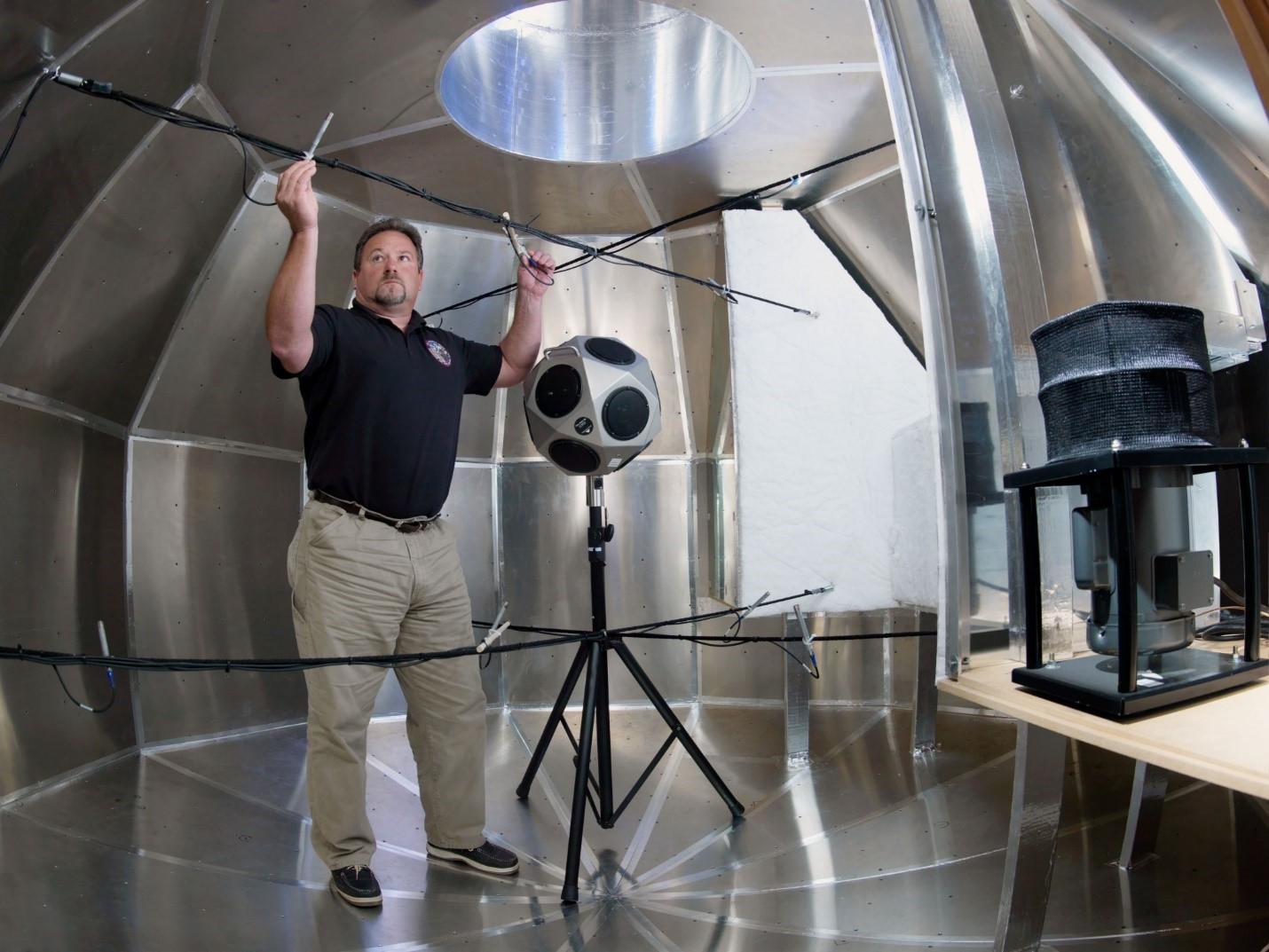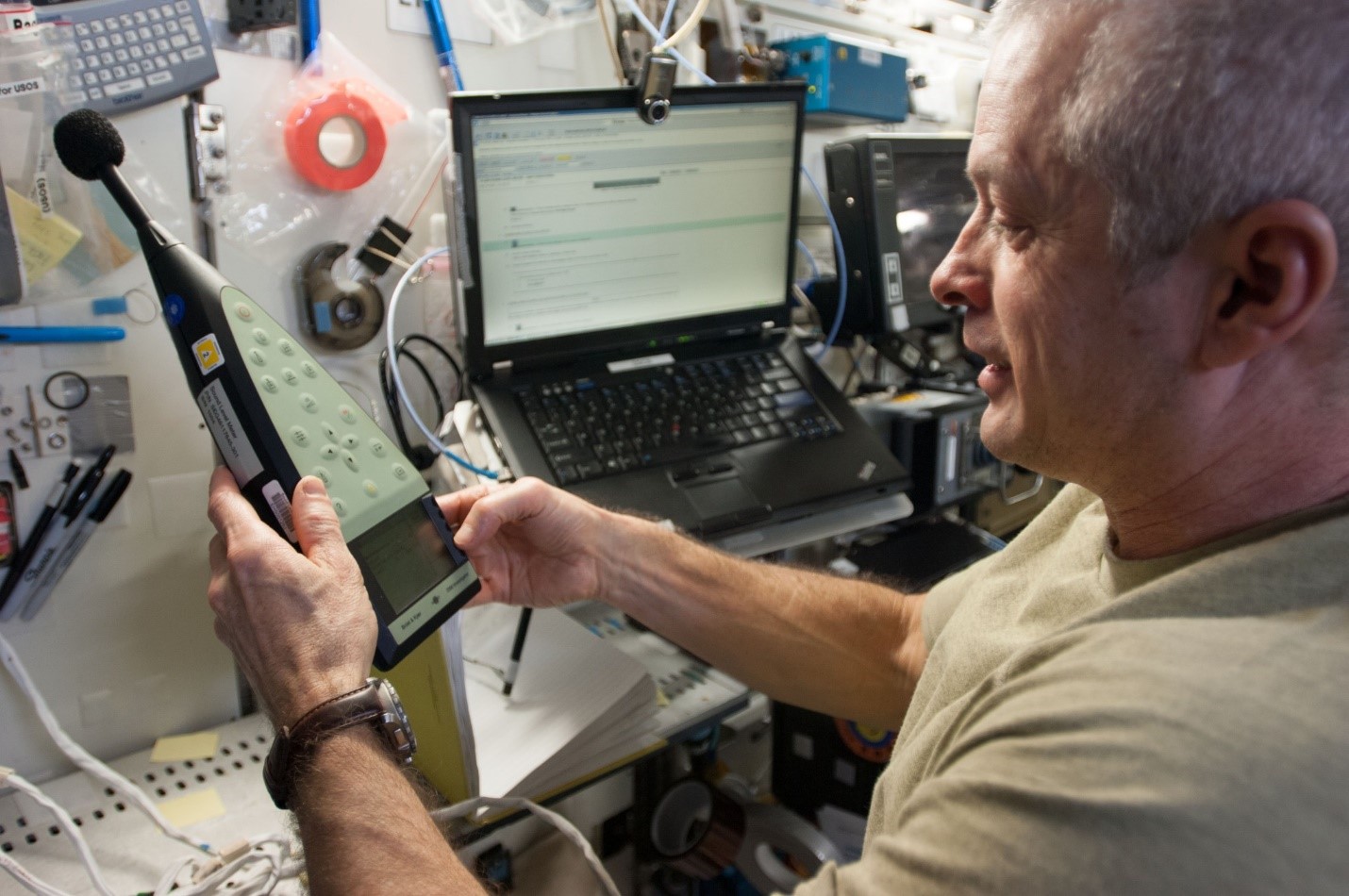Acoustics

Contents
Introduction
Acoustic testing is crucial for designing spaceflight environments and systems for human habitability, as it assesses and mitigates potential noise exposure risks for the crew to ensure safety and effective communication during spaceflight missions. As the home of human spaceflight, the Johnson Space Center (JSC) has a wide range of capabilities in audio system design, analysis, testing, and evaluation and is a recognized leader in the field of spacecraft acoustics. Center facilities and expertise have been instrumental in ensuring the success of NASA’s human spaceflight missions and will continue to play a critical role in supporting future human spaceflight. Explore the capabilities below, as we invite you to join us in the next stage of space exploration at the forefront of discovery.
Capabilities
Acoustics Environment Analysis (ANCL)
Overview | The Johnson Space Center (JSC) Acoustics and Noise Control Laboratory (ANCL) ensures Safe, Healthy and Habitable Vehicle Acoustic Environments. The Acoustic Office is responsible for ensuring safe, healthy, and habitable vehicle acoustic environments, in which astronaut crews can live, communicate, and work.
Details |
- Acoustic Emissions Testing
- Acoustic Flight Materials Development and Testing
- Noise Diagnostics and Control
- Acoustic Modeling
- Reverberation Time Measurement
- Acoustic Environment Demonstrations
- On-orbit Measurement and Monitoring
- Quiet Fan Tool Development and Support
- Transmission Loss Measurement
- Acoustic Absorption Measurement
- Space Suit Interior Acoustic Environment Assessments
Audio Development Laboratory
Overview | The Audio Development Lab (ADL) is used for the development, engineering evaluation, acceptance, and flight qualification testing of electro-acoustic and audio processing equipment.
Details | The ADL is used for the development, engineering evaluation, acceptance, and flight qualification testing of electro-acoustic and audio processing equipment: earphones, microphones, headsets, voice codecs, and audio distribution systems.
Anechoic Chamber – Audio Development Lab
Overview | The anechoic chamber at JSC provides an ultra-low ambient acoustic noise environment for testing microphone performance and characterizing acoustic emission sources.
Details |
- Microphone and speaker performance testing including THD+N, sensitivity, frequency response, rub and buzz
- Baseline speech intelligibility testing in ultra-quiet free field acoustic environment
- Microphone and speaker directivity measurement
- Dimensions: 15 x 15 x 15 feet
Quiet Room – Audio Development Lab
Overview | The quiet room provides a low acoustic noise environment used for audio recording and subjective audio performance testing.
Details |
- Speech intelligibility testing per ANSI S3.2 Standard
- Evaluation of audio communication systems and electro–acoustic devices
- Dimensions: 16 x 16 x 18 feet
Reverberation Chamber – Audio Development Lab
Overview | The reverberation chamber provides uniform simulated acoustic environments for performance testing electro-acoustic devices, such as earphones with passive noise attenuation and noise canceling microphones.
Details |
- Passive noise attenuation measurement of headphones
- Performance testing of noise cancelling microphones
- Use of acoustic test manikins for objective measurements and to avoid noise exposure for human test subjects
- Dimensions: 15 x 8 feet (pentagonal–shaped volume to ensure diffuse acoustic environment)
- Sound Pressure Level (SPL) Capability: 120 dB
Rotating Machinery Noise Minimization
Overview | Expertise is available for the design of new or assessment of existing hardware comprising rotating machinery including minimization of acoustic noise.
Details |
- Assessment of rotating machinery systems to identify sources of noise and to design/build/test abetment solutions
- Component, System and Vehicle-level Systems Engineering and Integration
- Analytical Simulation/Prediction, Independent Modeling and Model Validation
- Dynamic, Static, and Natural/Induced Environmental Testing
- System Management, Flight Hardware Acceptance, Joint Integrated Testing
- Standards and Specifications Development
- Rapid Prototyping and Evaluation
- Contact Modeling and Simulation
- Collaborative Working Environment































